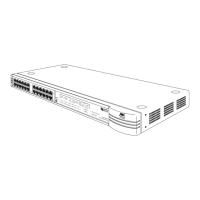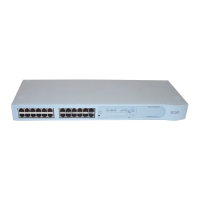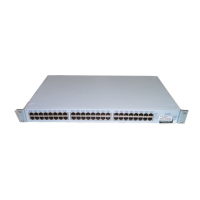An Example 183
5
Endstation B sends an NHRP packet with its own details back to
endstation A. This packet, however, is sent directly through the Switch
units and not through the routing device. To do this, endstation B
specifies that:
■
The packet is sent to the VLANs that endstation A can receive.
■
The packet has the destination MAC address of endstation A.
6
Endstation A receives the NHRP packet from the endstation B and records
the MAC address and VLAN membership of endstation B.
7
Endstation A sends the data packet to endstation B directly through the
Switch units. To do this, endstation A specifies that:
■
The packet is sent to the VLANs that endstation B can receive.
■
The packet has the destination MAC address of the endstation B.
An Example
Figure 38 (overleaf) shows a network containing two endstations, three
Switch units and a routing device. Endstation A is in VLAN 1, and
endstation B is in VLAN 2. In this setup, FastIP is not enabled and if
endstation A sends data packets to endstation B they must pass through
the routing device.
If FastIP is enabled on the Switch units and endstations:
1
Endstation A sends an NHRP packet to endstation B through Switch A,
Switch C, the routing device, Switch C, and Switch B. This is shown in
Figure 39
.
2
When endstation B receives the NHRP packet from endstation A, it sends
its own NHRP packet to endstation A through Switch B, Switch C and
Switch A. This is shown in Figure 40
.
3
When endstation A receives the NHRP packet from endstation B, it sends
data packets to endstation B through Switch A, Switch C and Switch B —
without passing through the routing device. This is shown in Figure 41
.
